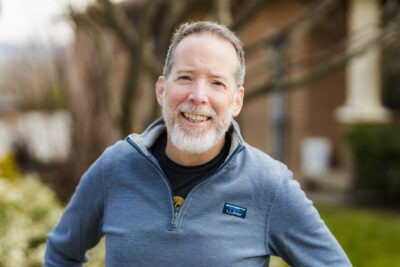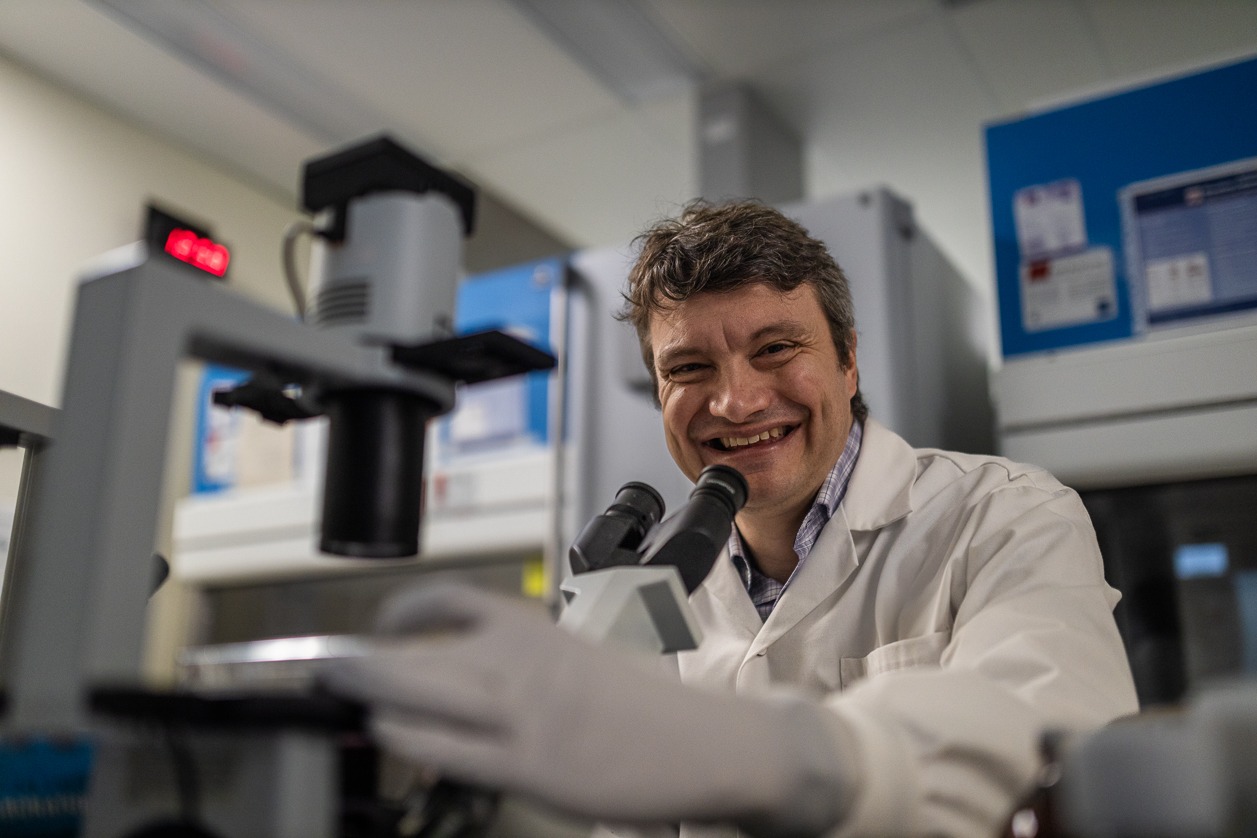
HHS cancer patient launching “Your Match Matters” to find young stem cell donors
After being diagnosed with a rare type of bone marrow cancer two years ago, Dundas resident Peter Clarke was inspired to create Your Match Matters, a non-profit organization that encourages people ages 17 to 35 from diverse backgrounds to join the Canadian Blood Services Stem Cell Registry. Donors in that age range give patients undergoing a stem cell transplant the best chance of long-term survival, and many people worldwide have difficulty finding a match due to a lack of diversity in stem cell registries.
“Canada has a great opportunity to expand the number of donors from diverse backgrounds.” — Dr. Tobias Berg, HHS hematologist
Stem cell donations can treat over 80 diseases and disorders, including leukemia, lymphoma and other blood cancers. The Your Match Matters website provides a link to Canada’s stem cell registry, where volunteer donors are matched with patients nationally and around the world who need a transplant.

Dr. Tobias Berg, HHS hematologist
“It’s a common belief that the best match always comes from a close blood relative, such as a sibling, but most patients don’t have matched family donors,” says Dr. Tobias Berg, a hematologist at Hamilton Health Sciences’ Juravinski Hospital and Cancer Centre (JHCC).
“A young matched unrelated donor can in some instances be an even better choice than an older related donor, so it’s extremely important to recruit young donors from diverse backgrounds.”
Leading centre
The JHCC is one of just three centres in the province to provide all forms of stem cell transplants to adult cancer patients. In 2020, the hematology service expanded with the opening of the Ron and Nancy Clark Stem Cell Transplantation and Cellular Therapies Unit for patients needing treatment for blood cancers.

Peter Clarke, HHS patient and stem cell donation advocate
Though Clarke, 59, will eventually need a transplant, he wasn’t motivated to launch Your Match Matters because of a personal search for a donor. “Four potential matches have already been found for me,” says the retired environmental consultant. Instead, he hopes to help unmatched patients in Canada and around the world find a donor.
Right now in Canada, nearly 1,000 people need a stem cell transplant.
“I was hearing stories of families frantically looking for matches for their family members,” says Clarke. “I couldn’t imagine the panic and helplessness they felt, and wanted to help change the odds.”
Your Match Matters launch party
Your Match Matters officially launches on April 19 at 7 p.m. with an in-person event at Millworks Creative in Dundas. The evening includes guest speakers and a video featuring Clarke’s story, as well as a video presentation by Berg. The public is encouraged to attend to learn more about becoming a donor, and Clarke is especially interested in attracting a 17-to-35-year-old crowd from diverse backgrounds.
Registering to donate is easy and painless
Clarke also plans to attend community events to promote stem cell donations to that target age group. An avid cyclist, he tested the promotional waters last fall with an information table at a gravel bike race in Haliburton, where many participants were in the target age range. Sixteen riders joined the registry that day, while visiting Clarke’s information table.

Avid cyclists Peter Clarke and his son Hayden plan to promote stem cell donation at in-person events.
“It wasn’t a large number, but it’s 16 more donors than previously existed on the registry,” says Clarke. “The more people that join, the better chance a person needing a stem cell transplant has of finding a match.”
He’ll be at the Mississauga Dragon Boat Festival on June 9 and the 24 Hours Summer Solstice on June 22-23 at Albion Hills Conservation Park in Caledon.
The Canadian registry is part of an international network of registries including more than 80 participating countries, with over 40 million donors from around the world.
Once a person registers to become a donor through the Canadian registry’s website, they’ll receive a free swab kit delivered to their address in one to three weeks.
The donor collects a sample by gently swabbing the insides of their cheeks, and mailing the sample to the registry free of charge. It can take months or years to find a match, so donors are asked to keep their health and contact information up to date.
Building a diverse donor base
The Canadian registry is part of an international network of registries including more than 80 participating countries, with over 40 million donors from around the world. It coordinates searches in Canada and with other international registries to help patients get the stem cells they need. Yet in spite of its size and scope, a match for a patient in Canada can only be found about 50 per cent of the time. Right now in Canada, nearly 1,000 people need a stem cell transplant.
“Canada has a great opportunity to expand the number of donors from diverse backgrounds,” says Berg. “Few countries in the world have as much genetic diversity as Canada, with people moving here from different cultural and regional backgrounds worldwide.”
A second cancer diagnosis
Clarke was diagnosed with two separate cancers within a few months of each other. The first diagnosis, in December 2021, was for kidney cancer.
“On January 25, 2022, most of my left kidney was removed,” says Clarke, who four months later was diagnosed with myelofibrosis – a second, separate cancer. Clarke was on his way to the Toronto airport for a cycling holiday on the Spanish island of Mallorca when he received a phone call with test results confirming the myelofibrosis diagnosis. “It was a visceral earthquake in my life,” says Clarke. “I was shaking. I couldn’t hold onto my suitcase or my keys.”
Clarke continued with his trip despite being completely rocked by the news, and upon returning, he met with Berg, his hematologist, for the first time and learned that a stem cell transplant could offer a potential cure.
For many diseases where a stem cell transplant is recommended, there’s a 50 to 60 percent of being cured, says Berg, adding that with some diseases, it’s as high as 80 to 90 percent.
Though four good matches were identified for Clarke, he won’t move forward with the transplant until his health begins to decline.
“For this condition, the need for a transplant depends on the progression of the disease and ability of the bone marrow to generate enough blood cells,” says Berg.
Transplants involve several days of chemotherapy leading up to the procedure, followed by months of recovery. “Right now I feel fine,” says Clarke, who is heading back to Mallorca later this month for another cycling trip. “I’m taking life one day at a time until I get to the point where I need the transplant. And I’m using this stretch of good health to launch Your Match Matters, and recruit new donors.”



